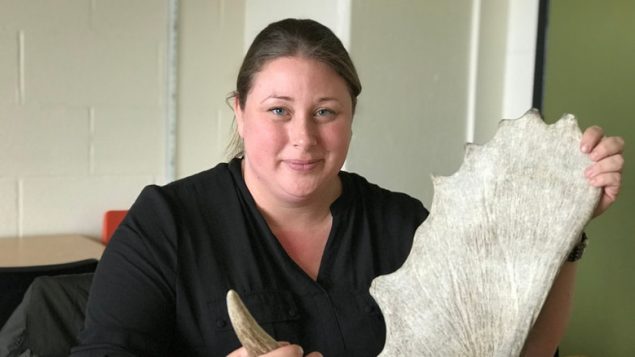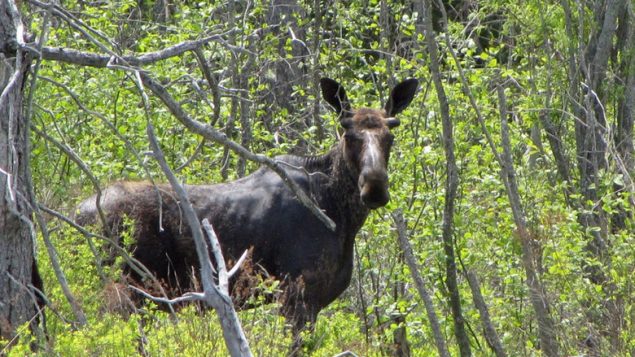Moose populations have declined by about 20 per cent in Ontario over the last ten years, according to the Ontario Environmental Commissioner.
Now a biologist in Sudbury, Ontario is working with the Indigenous population to combine and gather the knowledge in an app to monitor the trend.
“Intermingling tradition and technology”

Jesse Popp (Waubgeshig Rice/CBC)
Jesse Popp is a wildlife specialist with the Anishinabek/Ontario Fisheries Resource Centre and an adjunct professor in Biology at Laurentian University.
She’s the woman behind the smartphone app.
“That will allow land users to go out and record moose sightings and harvest and other additional information — Indigenous knowledge — so that they can record population trends through time,” she told Waubgeshig Rice of CBC News.
“So essentially it’s a means for intermingling tradition and technology.”
The moose-tracking app that Jesse Popp describes as “intermingling tradition and technology” (Waubgeshig Rice/CBC)
First Nations who are out on the land trapping, hunting or gathering medicinal plants can register the moose they see on the app and upload photos, as well as record any observations they may have.
“We work with communities to develop autonomous moose monitoring tools so they can see exactly what’s going on with moose in their traditional territory,” said Popp.
Jesse Popp is a member of Wiikwemkong Unceded Territory.
She is working toward “integrating Indigenous knowledge from land users and elders who could potentially have some really important insight into things that western science has previously overlooked.”
“Cultural inclusivity in science”
“Time and time again, Indigenous knowledge has proven very important to modern science, so it’s a priority in my research to show other researchers how valuable Indigenous knowledge and perspectives are,” she said.
“Being part of a culture that has this utmost respect for nature made me want to bring it all together.”
Community members of the Ojibways of Pic River First Nation are currently using the app which was developed in collaboration with Trailmark Systems, the Anishinabek/Ontario Fisheries Resource Centre, and Biigtigong Nishnaabeg.
The plan is to expand and modify the app to other Anishinabek Nation communities in Ontario.
Popp sees the initiative as a model for future projects between First Nations and the scientific community.
She refers to the Indigenous knowledge of plants and the medicinal properties influencing pharmacological development as a major example.
And Popp is confident that a continued acknowledgement of this expertise will inspire more Indigenous people to consider science as a career path.
“I think it’s really great to see cultural inclusivity in science. Indigenous knowledge and western science together can really make a substantial contribution to modern science,” Popp said.
“And with more people recognizing this and considering Indigenous knowledge in their research, perhaps we’ll begin to see more Indigenous people in the sciences, which is great, because we have so much to offer.”
(With files from CBC)







For reasons beyond our control, and for an undetermined period of time, our comment section is now closed. However, our social networks remain open to your contributions.